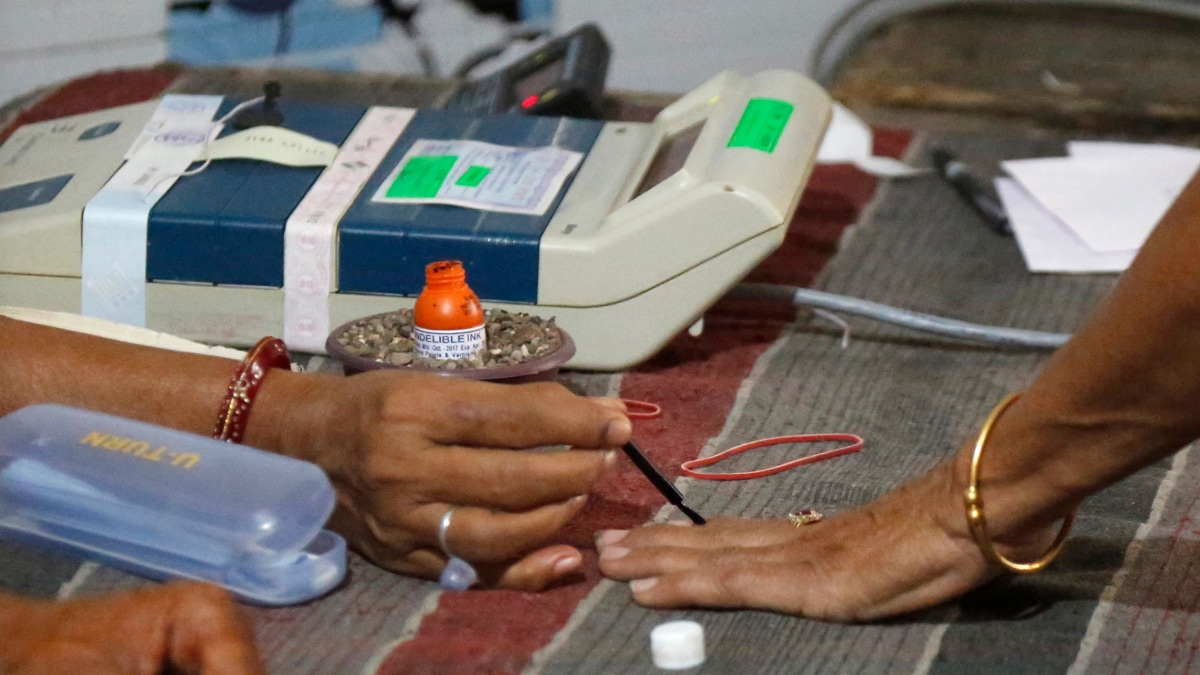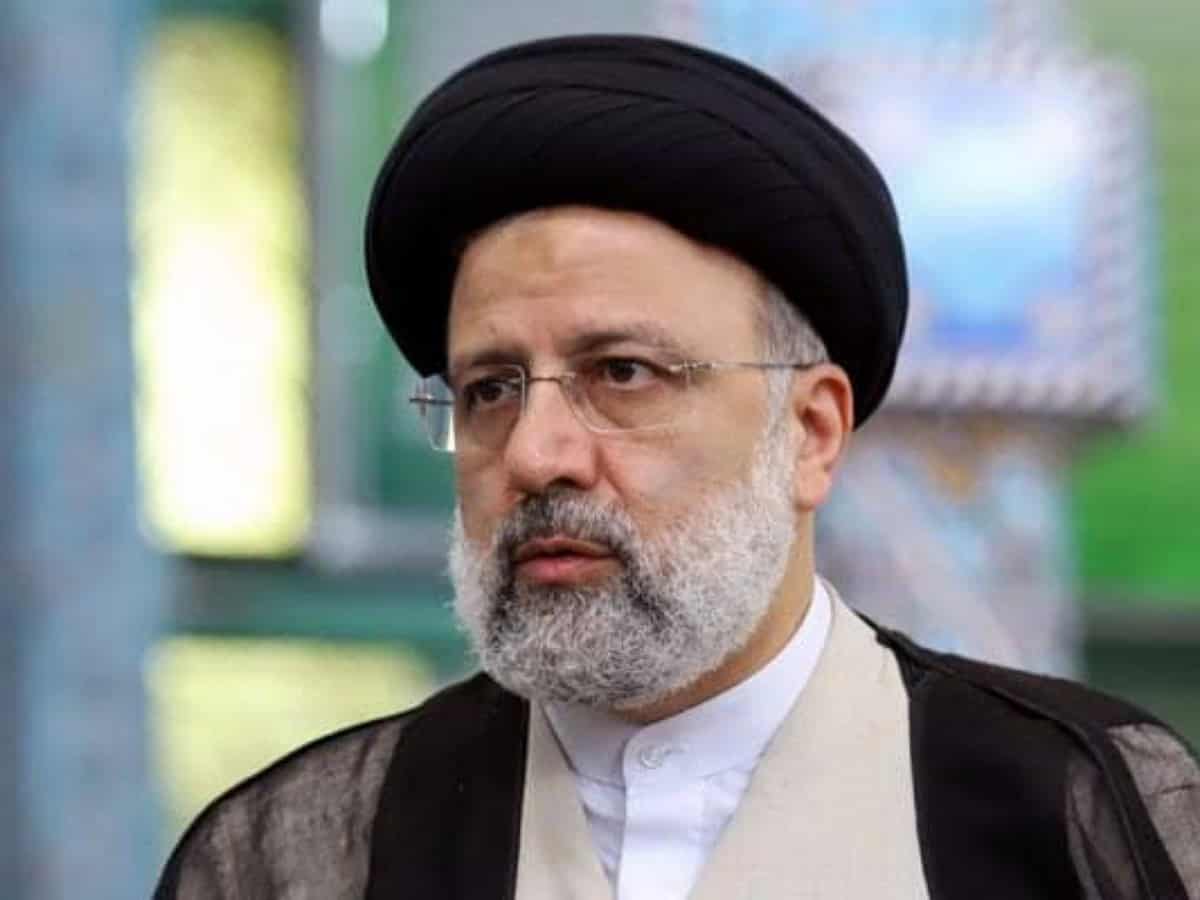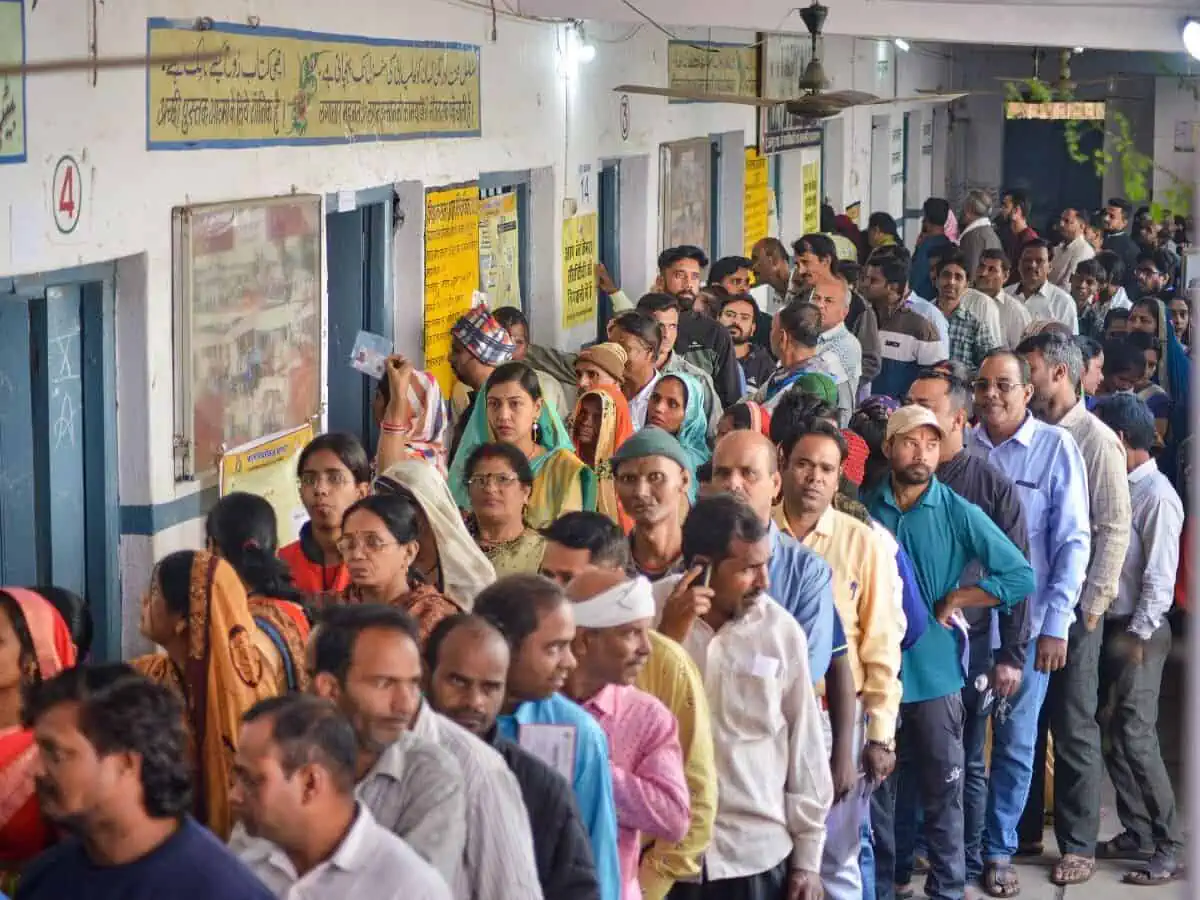Koraput is among the 21 Lok Sabha constituencies in Odisha. It comprises seven assembly segments – Gunupur (BJD), Bissam Cuttack (BJD), Rayagada (independent), Laxmipur (BJD), Jeypore (Congress), Koraput (BJD), and Pottangi (Congress) – spread over the Rayagada and Koraput districts.
Saptagiri Sankar Ulaka of the Congress is the incumbent MP from this Lok Sabha seat and he will try to defend it from other top contenders: Kaliram Majhi of the Bharatiya Janata Party and Kausalya Hikaka from the Biju Janata Dal.
Polling will take place here on May 13, in the fourth round of the ongoing seven-phase general elections. The votes will be counted on June 4.
Political dynamics
- Koraput is widely considered as the Congress’s bastion. In all elections barring the ones of 2009 and 2014, the party has emerged victorious here. However, the tide is shifting in this bastion as well, much like it is across Odisha. The entry of the BJP and the wide acceptance it is receiving should send warning bells ringing in the Congress and BJD camps.
- The Congress had managed to win back Koraput from the BJD in 2019. Its incumbent MP, Saptagiri Sankar Ulaka, has been fielded again. However, the story here lies in the numbers. In 2019, Ulaka won the seat by a razor-thin margin of 3,613 votes. Now that the fight here has turned triangular, with the BJP and BJD both vying for a victory, the Congress faces an incredibly tough job maintaining its hold. The Congress and BJD both appear to have equally strong support bases here.
- Our correspondents on the ground are giving a slight edge to the Congress, but the situation remains fluid. Given that Prime Minister Narendra Modi is set to campaign in Koraput himself, the dynamics could easily take a turn for the worse as far as the Congress is concerned.
- What has emerged as the biggest challenge for the Congress is that its own house is in absolute disorder. Disgruntled leaders have turned open rebels and do not see eye to eye with the MP and MLA candidates in the district. Given that Odisha is also voting to choose its next state government, the ticket distribution for MLAs is also having an impact on the party’s prospects of winning the parliamentary constituency as a whole.
- Several MLA and MP hopefuls who were not given the ticket are unlikely to put their weight behind Saptagiri Sankar Ulaka. Youth leader Abinash Gamang, son of the president of the Koraput Zilla Congress Committee, has even filed a nomination as an independent candidate. Jayaram Pangi, who recently left the Bharat Rashtra Samiti and joined the Congress, was also eyeing the seat. He is now said to be sulking after being denied a ticket.
- With such strong intra-party tussles, the pro-Congress vote stands a real chance of getting split, while also sending a message to voters that a party as divided from within as the Congress may not be the best political force to represent them in the Lok Sabha. The Congress is essentially banking on Koraput’s historical support for the party, apart from Saptagiri Ulaka’s own relationship with the people and his grassroots approach. What remains to be seen is whether these broad pillars of the Congress’s strategy deliver any result here, given that both the BJP and BJD are going all-out for a victory.
- For the Congress, retaining Koraput is also essential because losing this seat would mean the party faces a near-total wipeout from Odisha’s Lok Sabha constituencies. The consequences of this would be many, and the party’s organisation in Odisha – or whatever is left of it – will be the first to take a major hit.
- The BJP and BJD both realise that for the Congress, retaining Koraput is a matter of prestige. As politics stands today, this is what is driving both the parties to defeat the Congress at all costs.
- The BJP has strengthened its position in Koraput by leaps and bounds since 2019. Historically, the BJP has struggled to establish support bases in Koraput due to a lack of strong leadership and organisational activities. However, the situation is rapidly changing in favour of the BJP now.
- Even in the previous elections here, BJP candidates improved their vote share across the district considerably. While the BJP was not a serious contender in 2019, today, the saffron party is at par with both the BJD and Congress in all five assembly constituencies of Koraput district.
- For one, the BJP started its campaign activities well in advance. Besides, the saffron party has undertaken serious groundwork here, which has helped it penetrate all the way to the grassroots level, particularly in tribal areas. Add to that, regular visits of central ministers and repeated community-specific meetings have bolstered the party’s image among voters.
- In several areas, there is palpable anti-incumbency against the BJD government of the state, which is acting as another motivator for people to choose the BJP. The Congress, interestingly, does not figure much in such conversations. The Modi factor and the January consecration ceremony at the Ram Mandir in Ayodhya are the other big issues drawing voters towards the saffron party.
- In a show of strength, the BJP made a big splash on the day of filing nominations in Koraput. A massive crowd of over 20,000 supporters joined the procession during the filing of nomination papers by BJP candidates Kaliram Majhi for the Koraput Lok Sabha seat, and for the assembly Kailash Kulesika from Laxmipur, Raghuram Macha from Koraput, and Chaitanya Nandibali from Pottangi. Majhi has claimed that the BJP will sweep Koraput this time.
- Ground inputs, however, indicate that Kaliram Majhi is not very well-known or likeable among the public, which may be pushing voters towards the Congress and BJD. This is one significant chink in the BJP’s armour. If the saffron party does win, it will mostly be due to Narendra Modi and the impact that visits by senior ministers of his government have here.
- As far as the BJD is concerned, its core voters are expected to stick with it. That is a sizable chunk of voters. In 2019, despite losing the seat, the party was able to garner 3.67 lakh votes and a 34% vote share. However, the impact of the BJD may be more pronounced in the assembly elections. One defining element of the elections in Odisha is that voters appear to be making a clear distinction between who they will vote for to form the government in the state and at the Centre. While the BJD remains the first choice for many when it comes to the state government, the BJP is emerging as the primary choice for the government at the Centre.
- The BJD’s decision to field Kausalya Hikaka once again, despite the fact that she lost to the Congress in 2019, has led to some resentment in Naveen Patnaik’s camp. Tulsar Kirsam, a strong tribal leader hailing from the Lamatapur area was thought to be among the frontrunners for the Koraput ticket but was denied it eventually.
- At present, all three parties stand a fair chance of winning Koraput. The contest is extremely tight, and results could swing in favour of any party – even if the victory margin remains thin.
Demographics
- SC: 14.29%
- ST: 52.92%
- Hindu: 91.6%
- Christian: 6.6%
- Muslim: 1.8%
Key issues
Child marriage: Child marriage is a major issue in the tribal-dominated constituency of Koraput. According to reports, the local administration prevented at least 65 child marriage attempts in the region in 2023. Child marriage remains a persistent problem in Koraput’s tribal communities, particularly among the Paraja, Gadaba, Bhumiya, Bhatra, Halwa, Soura, and Kondh tribes. Traditional customs encouraging underage marriages, especially in remote areas, pose a significant challenge for local authorities despite awareness campaigns and increased vigilance. The practice of “udliya” (elopement) further complicates intervention efforts, as families often conceal these marriages.
Unemployment: Unemployment is also a big challenge in Koraput. There are no major industries in the region and the employment opportunities are quite low. The major occupation is agriculture with most farmers working towards self-sustenance rather than looking to sell their produce. This also leads to massive emigration to urban centres outside of the state in search of regular employment. Moreover, as a number of tribals move outside, they face discrimination.
Civic amenities: There are numerous issues with civic amenities mostly faced by the tribal population. From water supply issues to the absence of proper healthcare, non-existent road connectivity in some areas, garbage disposal problems, sewage problems, and electricity cuts. There are some hamlets in the region that have not had electricity since Independence. Moreover, the failure to supply water to the Bamuniaguda village has become a major issue for the residents. So much so, that they are threatening to boycott the general elections if the matter is not resolved. The region was included in a piped water programme; however, the water supply remains unreliable.
Low mobile network connectivity: Koraput district suffers from poor mobile connectivity which leads to difficulty in communication and spreading awareness in these parts. The region is dotted with hamlets that are 3-4 kilometres apart. While there has been an attempt to provide greater network connectivity, poor road connectivity and dense forests have restricted their propagation. To relay information, informers are sent to these areas. They are not reliable and the information about critical awareness and vaccination awareness programmes suffer.
Education: There is a lack of adequate educational infrastructure for the tribal population in Koraput. According to reports, the literacy rate among the tribal population is a mere 32.4%. The major causes are school dropout and absenteeism due to economic problems, household work, lack of interest in studies, parents not interested in studies, distance and difficulties in reaching school, apart from language barriers. Educational processes mostly disregard the socio-cultural characteristics, and tribal children face serious language problems during the initial years of schooling. The appointment of non-tribal teachers in tribal areas and the communication gap between the teachers and tribal children have also led to a major decline in literacy rates.
Tribal issues: Tribals in Koraput, despite being in the majority in the constituency, suffer from several issues. They have low income, poorer physical living conditions, less access to proper healthcare, education, and a range of other services and negligible access to labour, land and capital markets. Discrimination and prejudice against the tribal population is another major concern. People hesitate to provide them with jobs. Instances of violence have also been recorded against the tribals. Exclusion from the mainstream is another major issue that the tribals fear. Most of the tribals live deep inside forests with little to no road connectivity, which prevents their socio-economic growth.
Infrastructure development
Gupteswar temple project: The temple is being developed at a cost of Rs 20 crore in an effort to boost tourism and help in the socio-economic development of the region.
Jhangabati river barrage project: The project is being constructed at a cost of Rs 106 crore. It is a 106ft barrage near Chintaguda village.
Hospital infrastructure: The construction of a 650-bed hospital and a cancer wing at the SLN Medical College and Hospital at a cost of Rs 266 crore is underway. Another 300-bed hospital in Jeypore, at an estimated cost of Rs 100 crore, is also being constructed.
Tourism: The Centre has selected Koraput for development as a tourist destination under the ministry of tourism’s Swadesh Darshan 2.0 programme. The scheme will help develop tourism activities, infrastructure and sanitation at the identified tourism sites within the district and further look into tourist services, marketing & promotion, and capacity building to enhance the overall tourism potential of the district.
Railway infrastructure: Several stations within the constituency have witnessed improvements such as expanded circulating areas, waiting halls, and platform extensions. The addition of new train services and increased frequency on existing routes has enhanced connectivity for passengers. Furthermore, significant investments were made in track doubling, electrification, and the construction of new lines, paving the way for improved efficiency and future expansion of rail services in the region. Safety and accessibility have also been prioritised, with the construction of footbridges, road over bridges, and the elimination of level crossings. These measures are aimed to enhance passenger safety and streamline traffic flow. Additionally, stations like Koraput and Rayagada were equipped with modern amenities such as dedicated platforms for washing trains and improved coach watering systems.
Stay updated with live coverage of Lok Sabha Election 2024 Phase 3 Voting In Karnataka And Gujarat on our website. Get the latest updates, polling trends, result dates and more.







